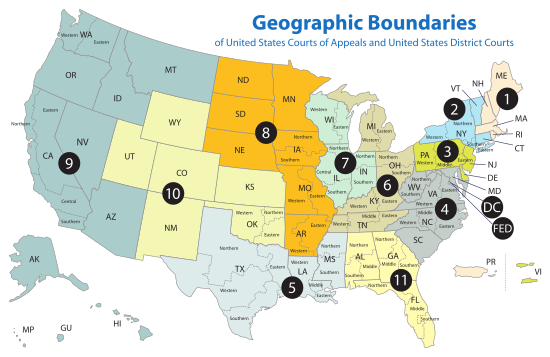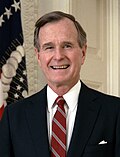Bush showed less interest in issues relating to the Supreme Court than other presidents before and after him. [9] Upon Souter's nomination, Bush made clear that he had no litmus test for court appointees. "You might just think that the whole nomination had something to do with abortion," Bush told reporters upon nominating Souter. "It's something much broader than that. I have too much respect for the Supreme Court for that." [2]
David Souter nomination
After William Brennan announced his retirement on July 20, 1990, Bush moved swiftly to identify a replacement. The New York Times published a story with a long list of potential nominees whose names had been mentioned. [1] However, ultimately, Bush narrowed down his list on Sunday, July 22, 1990, to just five candidates, all current or former federal appeals court judges: Edith Jones, Laurence H. Silberman, David Souter, Kenneth Starr and Clarence Thomas. [10] Bush was most interested in nominating Thomas, but he and his staff struggled with four issues surrounding Thomas
- his short tenure as a judge up to that point (just eight months on the United States Court of Appeals for the District of Columbia Circuit)
- the fact that Thomas' appointment at that time would mean that there would be two African-American men on a court of just nine individuals
- Bush was saving Thomas for Thurgood Marshall's seat when he eventually retired
- both Attorney General Dick Thornburgh and Counsel to President Bush C. Boyden Gray told the president that they felt that Thomas was not yet ready. [10] [11] [12]
There were also challenges involving several of the other candidates on Bush's short list. Gray's favorite choice for the seat was Jones, [13] whom Bush formally interviewed for the job. However, Jones was expected to provoke a confirmation battle, given her active history in partisan politics, her frequent appearances at meetings of the Federalist Society and her work with the Andrews Kurth law firm where then-Secretary of State James Baker had been a partner. [10] Silberman also was thought to provoke a confirmation battle in part because his legal views were thought to be similar to those of Chief Justice William Rehnquist and Associate Justice Antonin Scalia and also because Silberman had joined a ruling overturning one of Oliver North's convictions regarding the Iran–Contra affair. [10]
Ultimately, Bush chose Souter on July 24, 1990, and Souter was confirmed by the United States Senate on October 2, 1990, in a 90–9 vote. [3] [4] The senators voting against the Souter nomination were Brock Adams (D-WA), Daniel Akaka (D-HI), Bill Bradley (D-NJ), Quentin Burdick (D-ND), Alan Cranston (D-CA), Edward Kennedy (D-MA), John Kerry (D-MA), Frank Lautenberg (D-NJ), and Barbara Mikulski (D-MD). Senator Pete Wilson (R-CA) did not vote. [4]
Clarence Thomas nomination
After Thurgood Marshall announced his retirement on June 27, 1991, Bush considered only two choices: Thomas and United States Court of Appeals for the Fifth Circuit judge Emilio M. Garza. [7] Bush's strategists told the New York Times that all things being equal, Bush would have preferred to choose Garza. And while White House Chief of Staff John H. Sununu strongly favored Garza, Gray and Thornburgh had argued that Garza was "not ready," given that Garza had only been on the Fifth Circuit for a few weeks. [7]
In addition, Thomas had been widely believed to be in the process of being groomed for an eventual Supreme Court appointment since his 1989 appointment by Bush to the United States Court of Appeals for the District of Columbia Circuit. [7]
Ultimately, on July 2, 1991, Bush chose Thomas as Marshall's replacement. And after a contentious confirmation process that involved allegations of sexual harassment by Thomas, the United States Senate confirmed Thomas in a 52–48 vote on October 15, 1991.



